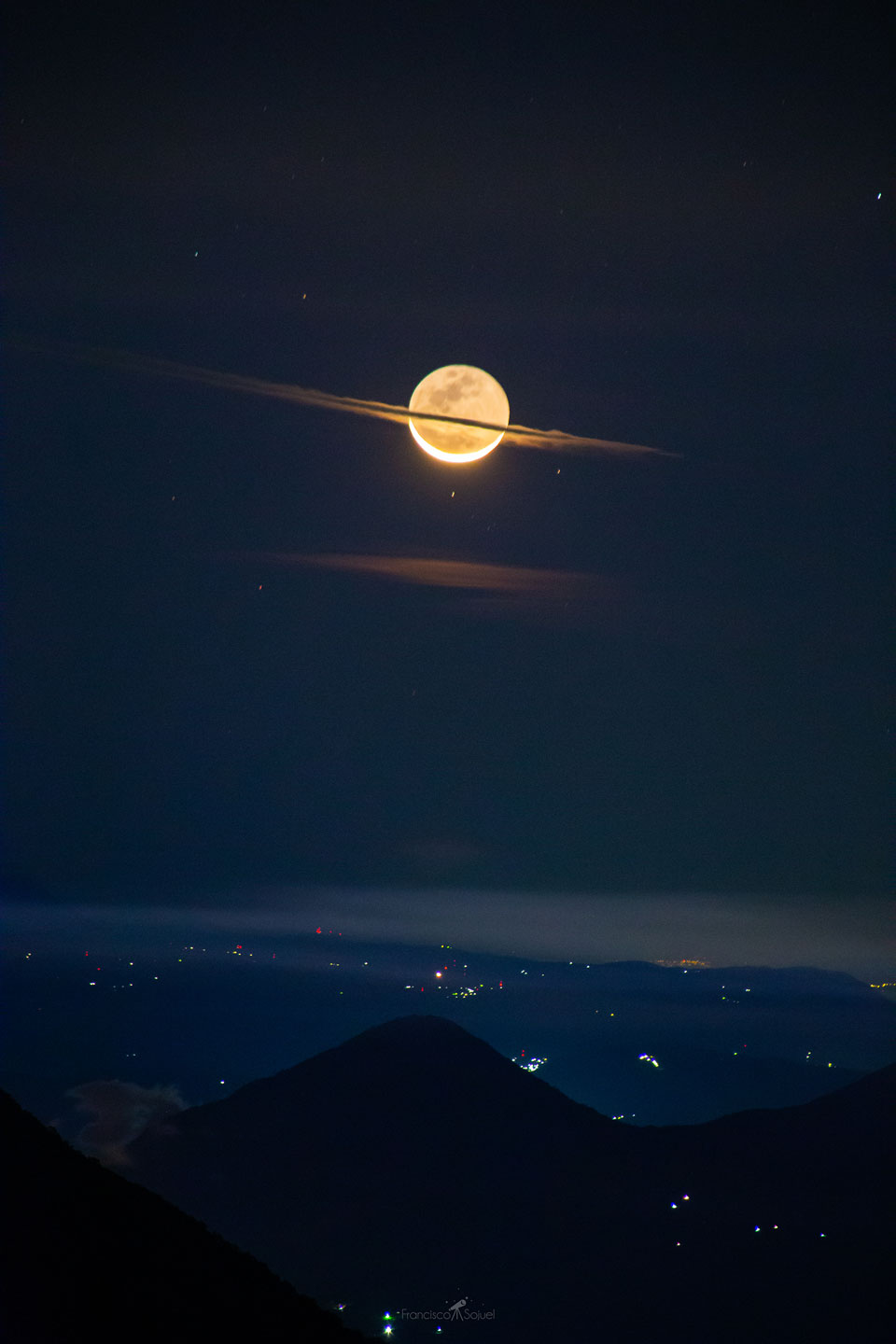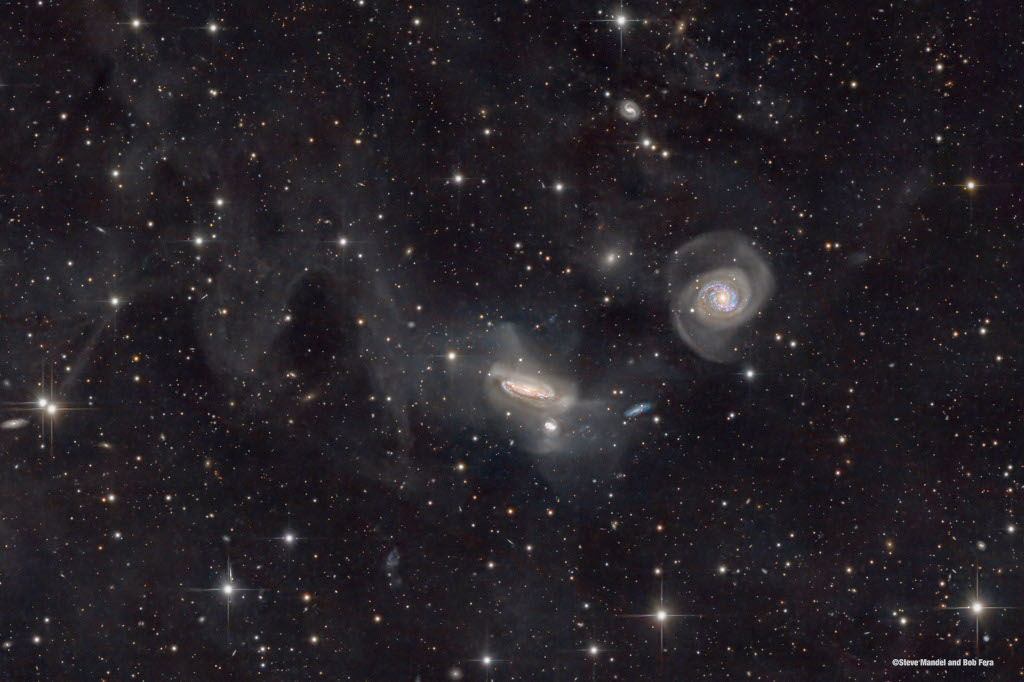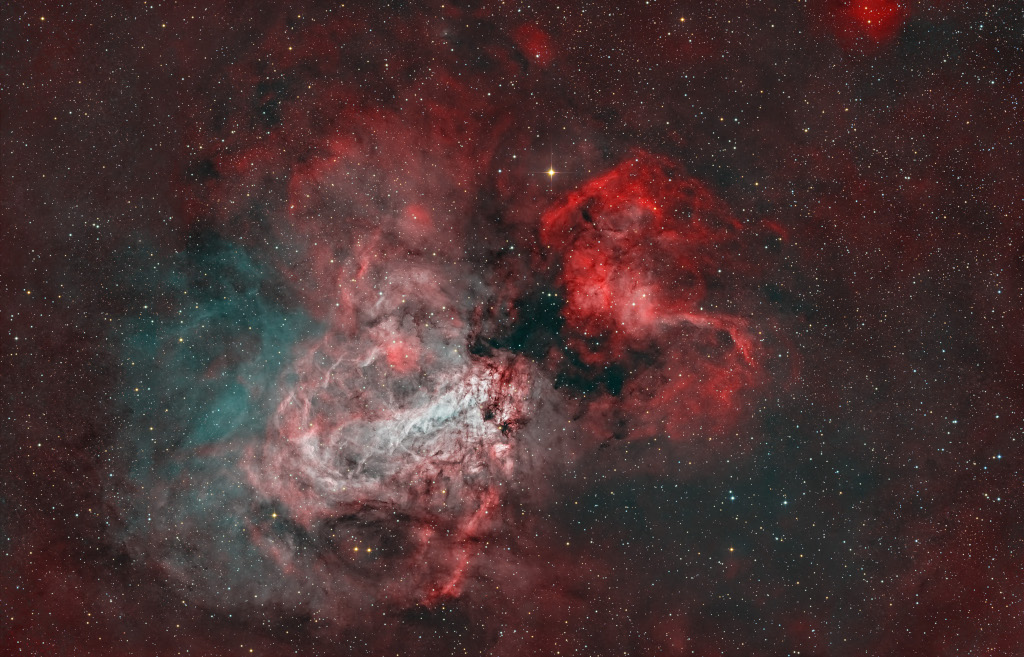
Nombre total de pages vues
01/09/2024
PHENOMENES METEOROLOGIQUES - Les mamelles du ciel

INVENTIONS DE DEMAIN - Prête-moi ta flore
ASTRONOMY - The Moon Dressed Like Saturn
2024 September 1
Image Credit & Copyright: Francisco Sojuel
Explanation: Why does Saturn appear so big? It doesn't -- what is pictured are foreground clouds on Earth crossing in front of the Moon. The Moon shows a slight crescent phase with most of its surface visible by reflected Earthlight, known as Da Vinci glow. The Sun directly illuminates the brightly lit lunar crescent from the bottom, which means that the Sun must be below the horizon and so the image was taken before sunrise. This double take-inducing picture was captured on 2019 December 24, two days before the Moon slid in front of the Sun to create a solar eclipse. In the foreground, lights from small Guatemalan towns are visible behind the huge volcano Pacaya.
31/08/2024
ASTRONOMY - IFN and the NGC 7771 Group
2024 August 31
Image Credit & Copyright: Steve Mandel and Bob Fera
Explanation: Galaxies of the NGC 7771 Group are featured in this intriguing skyscape. Some 200 million light-years distant toward the constellation Pegasus, NGC 7771 is the large, edge-on spiral near center, about 75,000 light-years across, with two smaller galaxies below it. Large spiral NGC 7769 is seen face-on to the right. Galaxies of the NGC 7771 group are interacting, making repeated close passages that will ultimately result in galaxy-galaxy mergers on a cosmic timescale. The interactions can be traced by distortions in the shape of the galaxies themselves and faint streams of stars created by their mutual gravitational tides. But a clear view of this galaxy group is difficult to come by as the deep image also reveals extensive clouds of foreground dust sweeping across the field of view. The dim, dusty galactic cirrus clouds are known as Integrated Flux Nebulae. The faint IFN reflect starlight from our own Milky Way Galaxy and lie only a few hundred light-years above the galactic plane.
POISSONS EXOTIQUES - La rascasse volante à antennes

30/08/2024
ASTRONOMY - Southern Moonscape
2024 August 30
Image Credit & Copyright: Lorand Fenyes
Explanation: The Moon's south pole is toward the top left of this detailed telescopic moonscape. Captured on August 23, it looks across the rugged southern lunar highlands. The view's foreshortened perspective heightens the impression of a dense field of craters and makes the craters themselves appear more oval shaped close to the lunar limb. Prominent near center is 114 kilometer diameter crater Moretus. Moretus is young for a large lunar crater and features terraced inner walls and a 2.1 kilometer high, central peak, similar in appearance to the more northerly young crater Tycho. Mountains visible along the lunar limb at the top can rise about 6 kilometers or so above the surrounding terrain. Close to the lunar south pole, permanently shadowed crater floors with expected reservoirs of water-ice have made the rugged south polar region of the Moon a popular target for exploration.
PLANTES FASCINANTES - Scarlet bankia - sublime plante d'Australie

29/08/2024
ASTRONOMY - Star Factory Messier 17
2024 August 29
Image Credit & Copyright: Gaetan Maxant
Explanation: A nearby star factory known as Messier 17 lies some 5,500 light-years away in the nebula-rich constellation Sagittarius. At that distance, this 1.5 degree wide field-of-view would span about 150 light-years. In the sharp color composite image faint details of the region's gas and dust clouds are highlighted with narrowband image data against a backdrop of central Milky Way stars. The stellar winds and energetic radiation from hot, massive stars already formed from M17's stock of cosmic gas and dust have slowly carved away at the remaining interstellar material, producing the nebula's cavernous appearance and the undulating shapes within. A popular stop on telescopic tours of the cosmos, M17 is also known as the Omega or the Swan Nebula.
BEAUX POISSONS EXOTIQUES - Poisson licorne à gros nez
28/08/2024
PHENOMENES METEOROLOGIQUES - Au cœur des ténèbres
SANTé/MEDECINE - Procédé révolutionnaire dans la lutte contre le cancer - 2/6 : Une découverte qui change tout
Jusqu’à présent, la lutte contre le cancer reposait principalement sur la chimiothérapie, la radiothérapie ou la chirurgie. Ces traitements,...

-
2022 September 26 All the Water on Planet Earth Illustration Credit: Jack Cook, Adam Nieman, Woods Hole Oceanographic Institution ; Data ...
-
La majorité des grêlons qui tombent sous les orages et les averses ne pèsent que quelques grammes. Mais il y a quelques années, c'est un...







